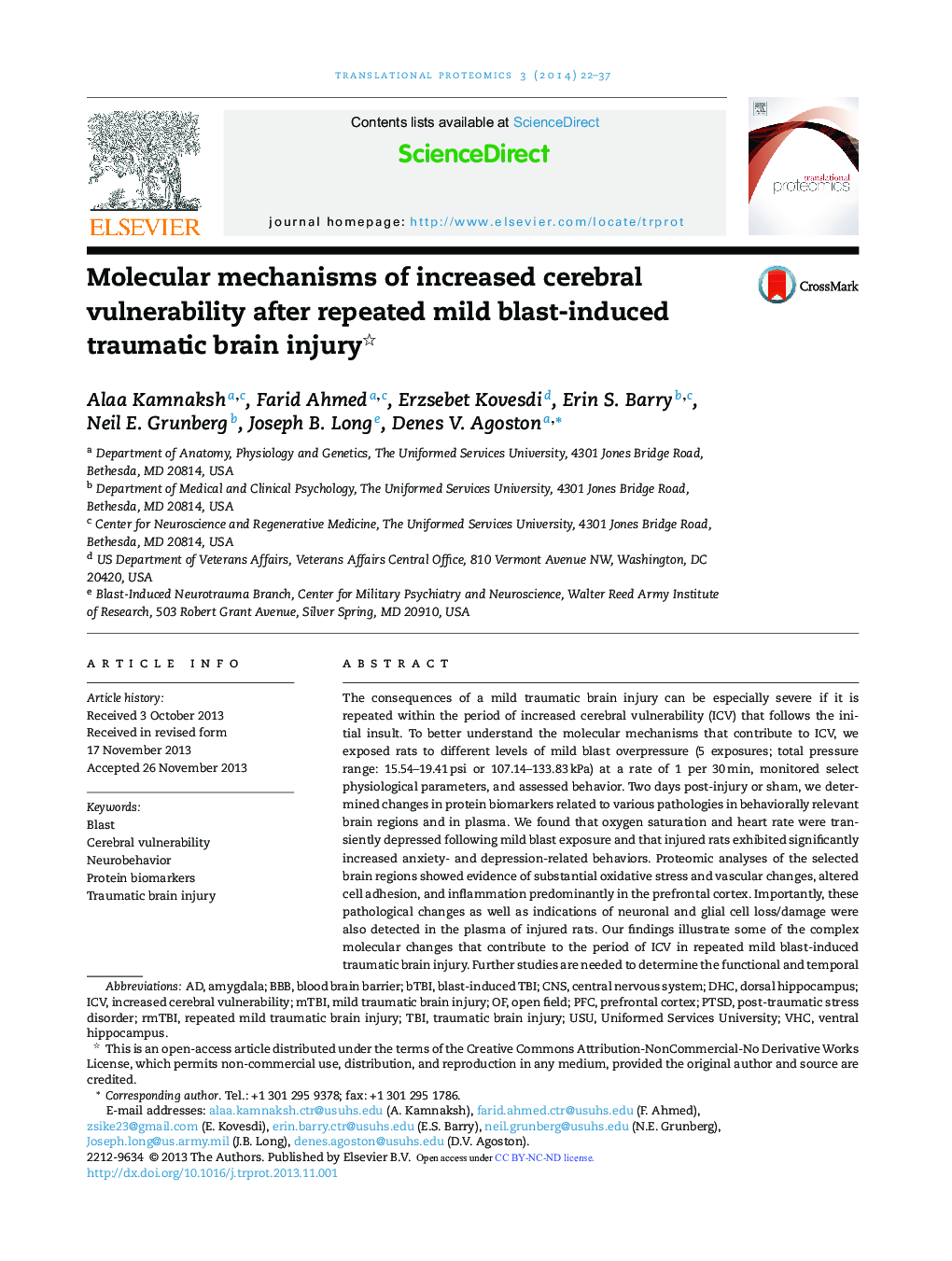| کد مقاله | کد نشریه | سال انتشار | مقاله انگلیسی | نسخه تمام متن |
|---|---|---|---|---|
| 2030437 | 1542775 | 2014 | 16 صفحه PDF | دانلود رایگان |
• Rats re-exposed to mild blast within the window of cerebral vulnerability showed:
• Transiently decreased heart rate and oxygen saturation levels.
• Increased anxiety- and depression-related behavior.
• Molecular signs of oxidative stress, vascular pathologies, and inflammation.
• Changes were detected in functionally-relevant brain regions and in systemic blood.
The consequences of a mild traumatic brain injury can be especially severe if it is repeated within the period of increased cerebral vulnerability (ICV) that follows the initial insult. To better understand the molecular mechanisms that contribute to ICV, we exposed rats to different levels of mild blast overpressure (5 exposures; total pressure range: 15.54–19.41 psi or 107.14–133.83 kPa) at a rate of 1 per 30 min, monitored select physiological parameters, and assessed behavior. Two days post-injury or sham, we determined changes in protein biomarkers related to various pathologies in behaviorally relevant brain regions and in plasma. We found that oxygen saturation and heart rate were transiently depressed following mild blast exposure and that injured rats exhibited significantly increased anxiety- and depression-related behaviors. Proteomic analyses of the selected brain regions showed evidence of substantial oxidative stress and vascular changes, altered cell adhesion, and inflammation predominantly in the prefrontal cortex. Importantly, these pathological changes as well as indications of neuronal and glial cell loss/damage were also detected in the plasma of injured rats. Our findings illustrate some of the complex molecular changes that contribute to the period of ICV in repeated mild blast-induced traumatic brain injury. Further studies are needed to determine the functional and temporal relationship between the various pathomechanisms. The validation of these and other markers can help to diagnose individuals with ICV using a minimally invasive procedure and to develop evidence-based treatments for chronic neuropsychiatric conditions.
Figure optionsDownload as PowerPoint slide
Journal: Translational Proteomics - Volume 3, June 2014, Pages 22–37
